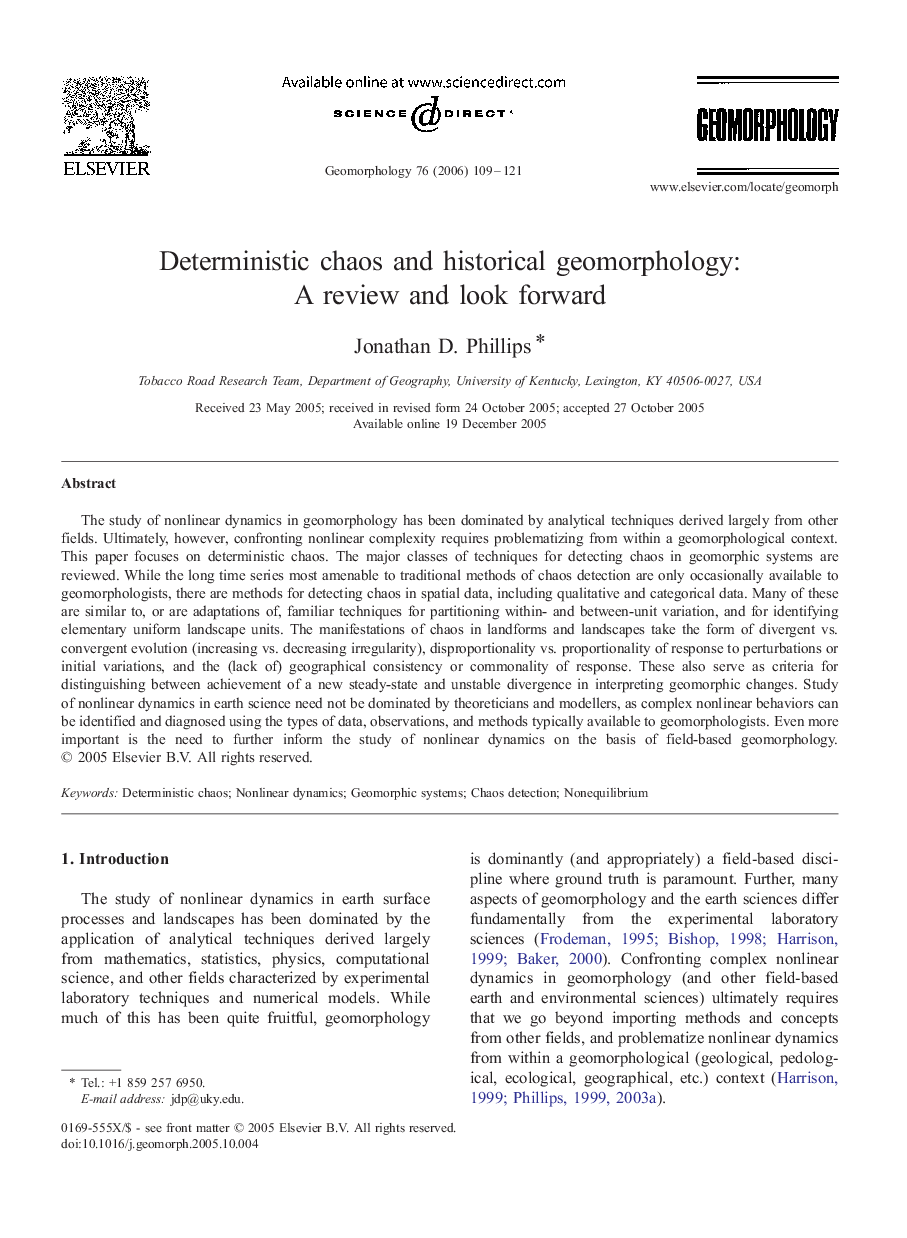| Article ID | Journal | Published Year | Pages | File Type |
|---|---|---|---|---|
| 4687711 | Geomorphology | 2006 | 13 Pages |
Abstract
The study of nonlinear dynamics in geomorphology has been dominated by analytical techniques derived largely from other fields. Ultimately, however, confronting nonlinear complexity requires problematizing from within a geomorphological context. This paper focuses on deterministic chaos. The major classes of techniques for detecting chaos in geomorphic systems are reviewed. While the long time series most amenable to traditional methods of chaos detection are only occasionally available to geomorphologists, there are methods for detecting chaos in spatial data, including qualitative and categorical data. Many of these are similar to, or are adaptations of, familiar techniques for partitioning within- and between-unit variation, and for identifying elementary uniform landscape units. The manifestations of chaos in landforms and landscapes take the form of divergent vs. convergent evolution (increasing vs. decreasing irregularity), disproportionality vs. proportionality of response to perturbations or initial variations, and the (lack of) geographical consistency or commonality of response. These also serve as criteria for distinguishing between achievement of a new steady-state and unstable divergence in interpreting geomorphic changes. Study of nonlinear dynamics in earth science need not be dominated by theoreticians and modellers, as complex nonlinear behaviors can be identified and diagnosed using the types of data, observations, and methods typically available to geomorphologists. Even more important is the need to further inform the study of nonlinear dynamics on the basis of field-based geomorphology.
Related Topics
Physical Sciences and Engineering
Earth and Planetary Sciences
Earth-Surface Processes
Authors
Jonathan D. Phillips,
